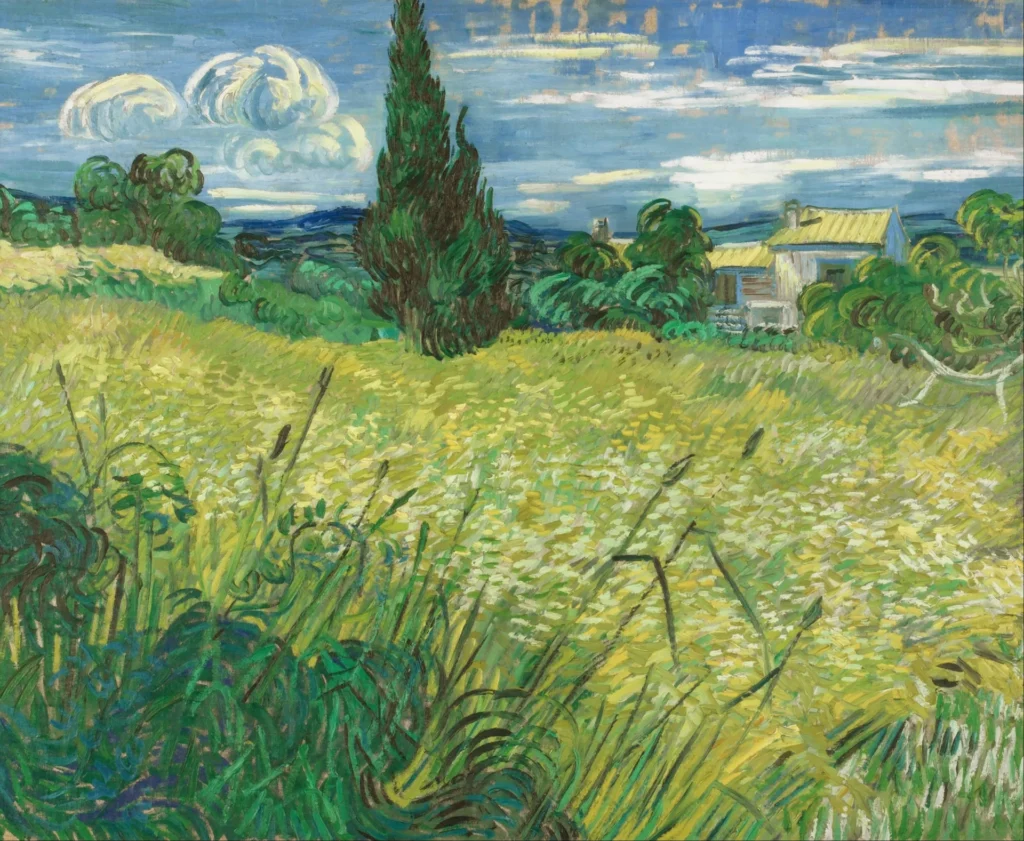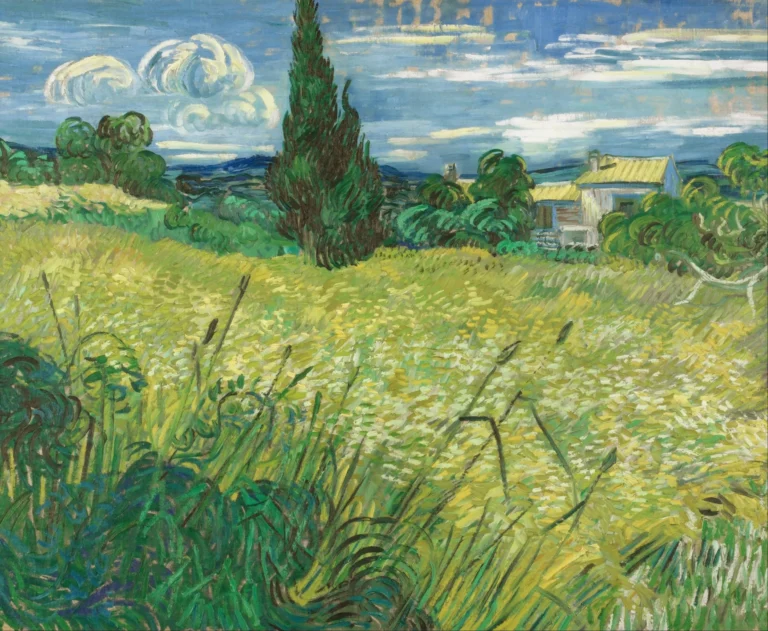Green Field
Green Wheat Field with Cypress is an oil-on-canvas painting by Vincent van Gogh, a Dutch Post-Impressionist artist. The National Gallery Prague holds the painting, where it is on display at the Trade Fair Palace in Holešovice and known as Zelené obilí ("Green wheat"). Van Gogh completed the work in 1889 while he was a voluntary patient at the asylum of St. Paul near Saint-Rémy in Provence.
1889 - 1890
About the Artwork
The painting, like many of Van Gogh's works at the time, was made on a size 30 canvas, with dimensions of 73 cm × 93.5 cm (28.7 in × 36.8 in). It depicts a field of mostly green wheat, with some parts ripening to yellow. A tall, dark cypress tree stands in the center, next to a small white house, with mountains in the background and a blue sky with white clouds above.Van Gogh wrote to his sister Wil on June 16, 1889, that he had just finished the painting, only a few days after he was allowed to paint en plein air. He also sent his brother Theo an ink drawing of the painting in early July 1889.Van Gogh had a fondness for cypress trees and a special affinity for wheat fields, depicting them many times throughout his career. To him, they represented the cycle of life and death, providing both solace and inspiration.According to art historian Ronald Pickvance, the colors in the piece are used more locally and the brushstrokes are more organic and vigorously hatched compared to high Impressionist practice. Pickvance also notes that the landscape affirms its normality within an Impressionist convention, with no spatial distortions, excessively heightened color tonalities, or revolutionary symbolism, and does not manifest psychological tension or project a morbid vision.The cypress tree in Green Wheat Field with Cypress is believed to symbolize Van Gogh's inner turmoil, his longing for spiritual connection, and his fascination with nature’s beauty and darkness
Did You Know
During the creation of ‘Green Wheat Field with Cypress’, Van Gogh was in an asylum, using his art as an essential outlet for his psychological turmoil, which ultimately transformed into magnificent depictions of the surrounding landscape.
As one of Van Gogh’s last works, Green Wheat Fields, Auvers poignantly encapsulates his emotional state, reflecting his feelings of both despair and beauty as he faced the end of his life.
Wheat fields in Van Gogh’s artworks symbolize more than just nature; they represent the cycle of life and death, growth and decay, echoing his own struggles and connection to the natural world around him.










